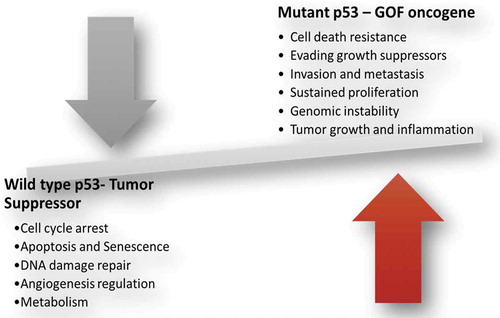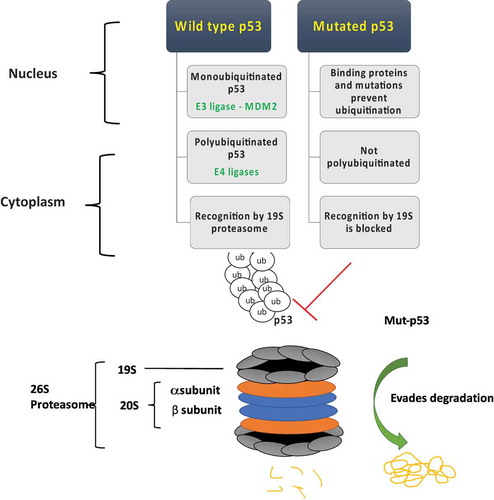Figures & data
Figure 1. Wildtype p53 is a tumor suppressor while mutant p53 acquires gain-of-function (GOF) oncogenic activities implicated in several hallmarks of cancer.

Figure 2. Wild type p53 is readily degraded by the proteasome through a multistep process of ubiquitination mediated primarily through the E3 ligase Murine Double Minute 2 (MDM2) and other E4 ligases. Mutant p53 (Mut-p53) evades proteasomal degradation likely due to defective ubiquitination and recognition by the proteasome machinery.

Table 1. Phase I/II and II trials of proteasome inhibitors in lung cancer.
